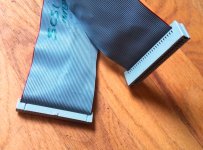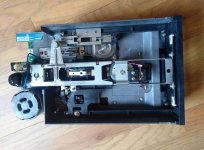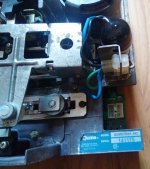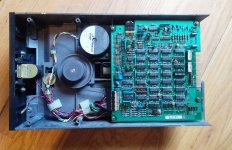DeltaDon
Veteran Member
Day late, dollar short once again.





Ill just use the fadap as I already own it regardless of whether it does anything. Im sure a cable would work, but for what I have on hand its fine.
Could very well be my problem. My settings with the kryoflux and greaseweazle are all wrong.If you're writing your disks using one of the flux-transition thingummies (Catweasel, Fluxengine, etc.) you need to figure in write precomp. The NEC 765 applies it at track 42 automatically.
Doesnt the Dbit fadap do that for me? This video by Texelec has it connected as a 1.2MB floppy direct to a pc.You need to jumper the RDY line. Pin 34 on a PC is not connected internally so your Ready for the 8" is probably floating ?
Chuck would know. I think he told me about it years ago. Can't remember exactly how that goes without some more digging
but it seems like just make the drive always ready.
Larry G
The only document i have come across is the MAINTENANCE manual. Would that cover default configurations?May I assume that your PC "MOTOR A" signal is activating the "HEAD LOAD" pin on the 842? You should hear a "clunk" when the drive is accessed by the PC. Also, check your "Drive Select" jumpers.
The 842 has a plethora of configuration options; since you don't know where this one came from, you need to check those against the "Factory Defaults" in the OEM manual on bitsavers.
So Id need a more versatile FDC? Can you recommend one. Are any of these new Quad Floppy boards that were all the news last year up to the task?Depends on what you're using for a host. A "blind' drive that doesn't handle sectored data will simply pulse the INDEX line every time it hits a hole. An index hole can be determined because it occurs halfway between two sector holes. But using a generic soft-sector (e.g. WD 17xx or NEC 765) FDC? Nope.
I suspect (as I've said before) that pretty much any commodity TO-3 NPN with appropriate ratings would work with the standard reference design. I suggested 2N5907 and 2N3055. The OP's uses "house numbered mystery" TO-3s.Mine uses 2N3055 transistors
